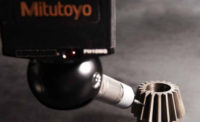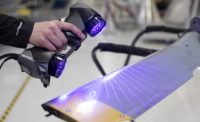In-line Inspection with CMMs
By increasing the frequency of inspections and decreasing the time of inspection throughout the production process, inspecting in or near the production line allows for verification of 100% of components.

Today’s manufactured components are more multifaceted than ever, requiring more parts, additional updates to those parts and ever tighter tolerances.
So as customer demands surge, manufacturers are reassessing component measurement. They have historically used tailgate measurement, or a process where operators use computer-controlled equipment to validate randomly selected parts in batches, to assess these parts. They have typically done this off the shop floor, usually in a lab.
But, as you might expect, this process is time consuming and can create bottlenecks. So, manufacturers are finding success in moving quality parts measurement to production. When done right, this method accelerates the manufacturing process and improves quality.
Moving measurement closer to the point of production streamlines the quality assurance process, delivers real-time feedback, and helps manufacturers to weave automation into their production. Some even consider in-line or near-line measurement to be essential for the smart factory.
By increasing the frequency of inspections and decreasing the time of inspection throughout the production process, inspecting in or near the production line allows for verification of 100% of components, instead of the sample rate from the tailgate measurement process. When parts are inspected more often, manufacturers can detect issues faster—and can fix them quickly. This results in less waste and fewer delays.
Manufacturers are using coordinate measuring machines (CMMs), to change inspection setups in a matter of hours and then make design changes on the fly.
Today’s CMMs boast relatively small footprints and can even fit inside CNC machining center enclosures. Their portability makes them amenable to part handling systems, too.
Ultimately, moving measurement to the shop floor takes manufacturers out of time consuming, post-production inspection to real-time assessments. With the use of CMMs, manufacturers can inspect parts more frequently and quickly while avoiding bottlenecks, reducing waste and making money-saving decisions as quickly as possible.
Looking for a reprint of this article?
From high-res PDFs to custom plaques, order your copy today!





